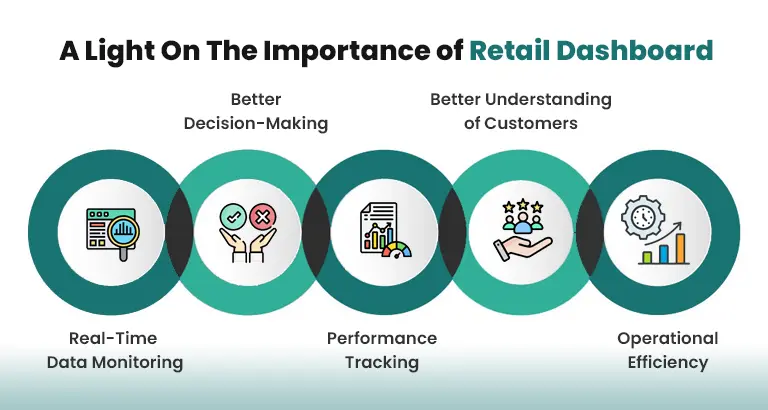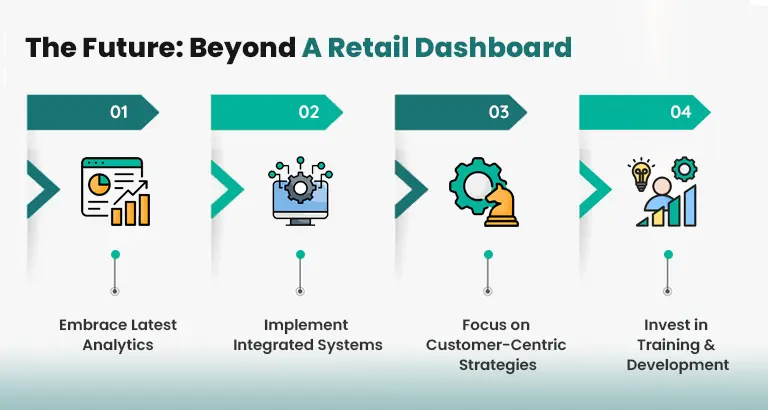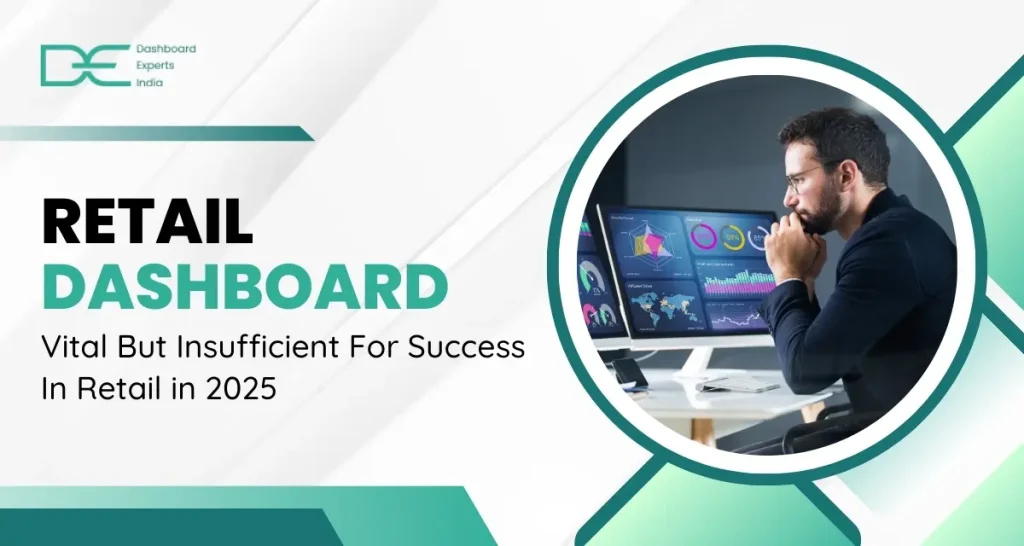Retail Dashboard: Vital But Insufficient For Success In Retail in 2025
Data is the cornerstone of strategic decision-making in this advanced or digitally laden world. To attain the goals you set for your business, you must have all your data sorted to make well-informed decisions. So, to tackle it, Retail Dashboard emerges as one of the ideal ways for businesses. It can aggregate and visualize all the key performance indicators (KPIs) that can assist businesses in monitoring operations, understanding customer behavior, and calling for well-informed decisions. However, irrespective of the benefit it imparts, it will not remain that much effective in 2025. So, let’s deep dive into this blog to explore why a retail store dashboard is crucial for success while highlighting all its limitations in this upcoming year.
A Light On The Importance of Retail Dashboard
Firstly, let’s dig into this section showcasing the importance of the Retail store performance dashboard to get more clarity.
1.Real-Time Data Monitoring
Retail dashboards give up-to-date information about different parts of a business, like sales numbers, stock amounts, and customer activity. This quick access to information helps retailers react fast to new trends or problems. For instance, if a certain product is selling quicker than expected, companies can change their stock levels to prevent running out.2.Better Decision-Making
Dashboards bring together data from many places into one place, making it simpler for leaders to look at performance and find ways to do better. By showing data in charts and graphs, everyone involved can easily understand important details and make smart choices that help the business grow.3.Performance Tracking
Retail dashboards allow companies to choose important goals and see how well they are doing over time. This helps businesses check how well their marketing plans, selling methods, and daily operations are working. For example, a store can look at how much it costs to get new customers and how many of them actually buy something to see if their marketing is paying off.4.Better Understanding of Customers
Knowing what customers like and how they shop is very important for any store. Dashboards can show things like who the customers are, what they buy, and what they prefer. This information helps businesses make better products and marketing plans. By using this data, stores can offer things that customers really want and need.5.Operational Efficiency
Using tools that show information like how well the supply chain is working and how productive employees are, retailers can find ways to improve their operations. For instance, if a tool shows that a certain supplier always sends items late, the retailer can fix the problem before it affects customer happiness. To get hold of such factors for your business, you must shake hands with us (Dashboard Experts India) to be with you as your Dashboard Development company. Related Blog - Instagram professional dashboardRetail Dashboard: Limitations To Know in 2025
A Retail store dashboard is very useful for tracking performance and making smart choices, but it also has some problems that companies need to fix by 2025.1.Data Overload
As more and more data is created, stores might feel like they have too much information to handle. Dashboards can show a lot of data, but it might not help with making decisions. Companies need better tools that can find important patterns and trends in big groups of data, not just show pictures.2.Lack of Predictive Capabilities
Many retail dashboards mainly look at past data instead of trying to predict what will happen next. As people's shopping habits change more often because of things like money issues and new tastes, stores need tools that can guess what will happen in the future by looking at patterns in past data. Predicting what will happen can help companies prepare for changes in what people want and manage their stock better.3.Problems with Combining Systems
Stores often use different software for different jobs, like managing stock, keeping track of customers, and running their online store. This can cause the data to be kept in separate places. Even though dashboards can bring data from different places together, it's still hard to make all these systems work well together. Companies need ways to share data instantly between all their systems to get a complete picture of what's going on.4.Stagnant Reporting
A lot of retail dashboards have reports that stay the same and don’t change with new needs or situations. But people’s shopping habits change quickly, so businesses need reports that can change too. This way, they can focus on what’s important right now, like solving a problem or reaching a goal.The Future: Beyond A Retail Dashboard
To stay successful in 2025 and later, stores need to change how they use data by combining new technology with their usual methods:

